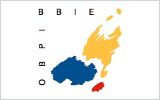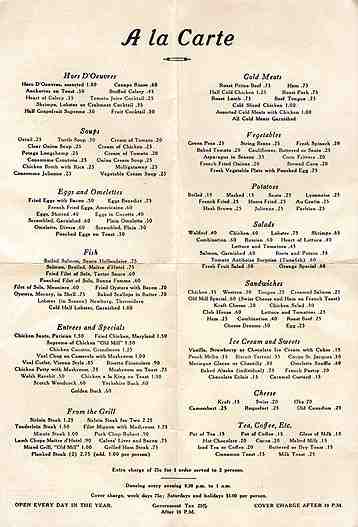Gerecht EU week 48
Gemeenschapsmerk. We beperken ons tot een wekelijks overzicht van de (voortgezette oppositie)beslissingen van het Gerecht EU. Ditmaal over:
A) Onvoldoende bespreking van bewijs van gebruik middels export
B) OHIM had de opmerkzaamheid van het in publiek relatief hoog ingeschat
C) vitaminaqua tegen VITAMINWATER
Gerecht EU 28 november 2013, zaak T-34/12 (HERBA SHINE) - dossier
 A) Beroep ingesteld door de houder van de nationale, internationale en communautaire woordmerken „HERBACIN”, voor waren van klasse 3, en strekkende tot vernietiging van beslissing R 2255/20101 van de eerste kamer van beroep van het Bureau voor harmonisatie binnen de interne markt merken, tekeningen en modellen) van 22 november 2011, houdende vernietiging van de weigering van de oppositieafdeling om het woordmerk „HERBA SHINE”, voor waren van klasse 3, in te schrijven in het kader van de oppositie die door verzoekster is ingesteld.
A) Beroep ingesteld door de houder van de nationale, internationale en communautaire woordmerken „HERBACIN”, voor waren van klasse 3, en strekkende tot vernietiging van beslissing R 2255/20101 van de eerste kamer van beroep van het Bureau voor harmonisatie binnen de interne markt merken, tekeningen en modellen) van 22 november 2011, houdende vernietiging van de weigering van de oppositieafdeling om het woordmerk „HERBA SHINE”, voor waren van klasse 3, in te schrijven in het kader van de oppositie die door verzoekster is ingesteld.
Het beroep wordt toegewezen; het bewijs van gebruik (middels export) is door het OHIM onvoldoende meegenomen in haar beslissing. Het behoort niet tot de taken van het Gerecht EU de beoordeling van die stukken nu voor het eerst uit te voeren.
44 Die Klägerin legt die angefochtene Entscheidung anders aus als das HABM. Während die Klägerin meint, die Beschwerdekammer habe die Bestimmung des Art. 15 Abs. 1 Unterabs. 2 Buchst. b der Verordnung Nr. 207/2009 „ignoriert“ oder „übersehen“, macht das HABM in seiner Klagebeantwortung im Wesentlichen geltend, die Beschwerdekammer habe die von der Klägerin beigebrachten Unterlagen nicht für ausreichend gehalten, um den Nachweis einer Benutzung durch Export zu erbringen.
46 In der mündlichen Verhandlung hat das HABM im Wesentlichen geltend gemacht, dass die Beschwerdekammer die angefochtene Entscheidung insoweit nicht habe begründen müssen, da die Klägerin im Verwaltungsverfahren nicht vorgetragen habe, die älteren Marken durch Export benutzt zu haben.
53 Ergänzend ist darauf hinzuweisen, dass Laboratoire Garnier zwar vorgetragen hatte, die von der Klägerin vorgelegten Benutzungsnachweise seien nicht ausreichend, und dabei angemerkt hatte, dass nur neun der 30 eingereichten Rechnungen in Mitgliedstaaten der Union gesandt worden seien. Jedoch hatte Laboratoire Garnier nicht geltend gemacht, dass an Empfänger außerhalb der Union ausgestellte Rechnungen nicht zu berücksichtigen seien. Sie hatte jedenfalls kein spezielles Argument vorgebracht, um die Feststellung der Widerspruchsabteilung zu widerlegen, wonach mit den Rechnungen nachgewiesen worden sei, dass die Waren aus Deutschland stammten und für die Ausfuhr ins Ausland bestimmt waren. Selbst wenn man annähme, dass die schriftliche Beschwerdebegründung der Laboratoire Garnier vom 17. Januar 2011 bei der Prüfung der Begründung der angefochtenen Entscheidung berücksichtigt werden muss, ließen sich diesem Schriftsatz nicht die Gründe entnehmen, aus denen die Beschwerdekammer die an Empfänger außerhalb der Union ausgestellten Rechnungen unbeachtet ließ.
56 Die Prüfung der Frage, ob die von der Klägerin vorgelegten Beweismittel für den Nachweis genügen, dass die in Art. 15 Abs. 1 Unterabs. 2 Buchst. b der Verordnung Nr. 207/2009 vorgesehenen Voraussetzungen erfüllt sind, erfordert jedoch eine Beurteilung sämtlicher von der Klägerin vorgelegter Beweismittel, die von der Beschwerdekammer nicht vorgenommen wurde. Diese Beurteilung erstmals vorzunehmen, ist nicht Aufgabe des Gerichts (vgl. in diesem Sinne Urteil des Gerichtshofs vom 5. Juli 2011, Edwin/HABM, C‑263/09 P, Slg. 2011, I‑5853, Randnr. 72).
Gerecht EU 28 november 2013, zaak T-374/09 (Ganeder) - dossier
 B) Beroep ingesteld door de houder van het gemeenschapswoordmerk „Ganter” voor waren van klasse 25 en strekkende tot vernietiging van beslissing R 1289/20081 van de eerste kamer van beroep van het Bureau voor harmonisatie binnen de interne markt (BHIM) van 16 juli 2009 houdende verwerping van het beroep tegen de beslissing van de oppositieafdeling tot afwijzing van de door verzoekster ingestelde oppositie tegen de aanvraag tot inschrijving van het woordmerk „Ganeder” voor waren van de klassen 14, 18 en 25. Het beroep wordt toegewezen, de beslissing van het OHIM wordt vernietigd; het OHIM had de opmerkzaamheidgraad van het gebruikelijke publiek relatief hoog ingeschat.
B) Beroep ingesteld door de houder van het gemeenschapswoordmerk „Ganter” voor waren van klasse 25 en strekkende tot vernietiging van beslissing R 1289/20081 van de eerste kamer van beroep van het Bureau voor harmonisatie binnen de interne markt (BHIM) van 16 juli 2009 houdende verwerping van het beroep tegen de beslissing van de oppositieafdeling tot afwijzing van de door verzoekster ingestelde oppositie tegen de aanvraag tot inschrijving van het woordmerk „Ganeder” voor waren van de klassen 14, 18 en 25. Het beroep wordt toegewezen, de beslissing van het OHIM wordt vernietigd; het OHIM had de opmerkzaamheidgraad van het gebruikelijke publiek relatief hoog ingeschat.
31 Zum Aufmerksamkeitsgrad der maßgeblichen Verkehrskreise ist festzustellen, dass die Beschwerdekammer in Randnr. 12 der angefochtenen Entscheidung zu Unrecht davon ausgegangen ist, dass der Aufmerksamkeitsgrad der maßgeblichen Verkehrskreise relativ hoch sei, da es sich bei den fraglichen Waren zwar nicht um solche handele, die vom Verbraucher tagtäglich eingekauft würden, jedoch um solche, die im Alltagsleben unabdingbar seien.
32 Entgegen der Ansicht des HABM sind Schuhe nämlich Massenkonsumgüter, die vom Durchschnittsverbraucher, dessen Aufmerksamkeitsgrad beim Kauf dieser Waren nicht höher als durchschnittlich sein wird, häufig gekauft und verwendet werden. Der Aufmerksamkeitsgrad in Bezug auf diese Waren wird nicht höher als durchschnittlich sein, weil diese Waren weder teuer noch selten sind, ihr Erwerb und ihre Verwendung keine speziellen Kenntnisse erfordern und sie keine schwerwiegenden Auswirkungen auf die Gesundheit, das Budget oder das Leben des Verbrauchers haben (vgl. in diesem Sinne Urteile des Gerichts vom 25. Mai 2012, Nike International/HABM – Intermar Simanto Nahmias [JUMPMAN], T‑233/10, noch nicht in der amtlichen Sammlung veröffentlicht, Randnr. 22, und vom 19. April 2013, Hultafors Group/HABM – Società Italiana Calzature [Snickers], T‑537/11, noch nicht in der amtlichen Sammlung veröffentlicht, Randnr. 23).
33 Daher ist der Klägerin darin zuzustimmen, dass der Beschwerdekammer ein Fehler unterlaufen ist, als sie den Aufmerksamkeitsgrad der maßgeblichen Verkehrskreise hinsichtlich der fraglichen Waren und ihrer Marken als relativ hoch eingestuft hat.
Gerecht EU 28 november 2013, zaak T-410/12 vitaminaqua) - dossier
C) Gemeenschapsmerk – Beroep ingesteld door de aanvrager van het beeldmerk met het woordelement „vitaminaqua” voor waren van de klassen 5, 30 en 32, en strekkende tot vernietiging van beslissing R 997/20111 van de eerste kamer van beroep van het Bureau voor harmonisatie binnen de interne markt (BHIM) van 26 juni 2012 houdende vernietiging van de beslissing van de oppositieafdeling waarbij de oppositie van de houder van onder meer de nationale woordmerken „VITAMINWATER” voor waren van de klassen 5, 30 en 32 is afgewezen. Het beroep wordt afgewezen.
56 Quant à la comparaison conceptuelle, la chambre de recours n’a pas commis d’erreur en estimant que les marques en conflit présentaient une similitude, voire une identité.
80 Quant à la comparaison conceptuelle des signes, il a déjà été constaté aux points 57, 58 et 69 ci-dessus que les consommateurs portugais et français connaissent le mot « vitamin » et comprendront aisément que les termes « water » et « aqua » signifient tous les deux « eau ». Par définition, les consommateurs anglophones comprendront également la signification des mots « vitamin » et « water », qui font partie du vocabulaire courant de la langue anglaise. Ainsi que le relève à juste titre la chambre de recours au considérant 43 de la décision attaquée, il est également raisonnable de penser que le public anglophone identifiera le sens du mot « aqua » comme désignant l’eau, ce dernier étant le préfixe de nombreux mots courants de la langue anglaise qui se réfèrent à l’eau.
81 La chambre de recours n’a donc pas commis d’erreur en constatant une identité conceptuelle entre les marques en conflit au considérant 45 de la décision attaquée, au moins dans une partie de l’Union.
 Uitspraak ingezonden door Laura Fresco,
Uitspraak ingezonden door Laura Fresco,  In een eerdere
In een eerdere  A. Gemeenschapsmerk. Beroep tot vernietiging van beslissing R 260/20111 van de eerste kamer van beroep van het Bureau voor harmonisatie binnen de interne markt (BHIM) van 1 maart 2012 houdende vernietiging van de nietigverklaring door de nietigheidsafdeling van het
A. Gemeenschapsmerk. Beroep tot vernietiging van beslissing R 260/20111 van de eerste kamer van beroep van het Bureau voor harmonisatie binnen de interne markt (BHIM) van 1 maart 2012 houdende vernietiging van de nietigverklaring door de nietigheidsafdeling van het  Gemeenschapsmerk –Vernietiging van beslissing R 493/20121 van de eerste kamer van beroep van het Bureau voor harmonisatie binnen de interne markt (BHIM) van 18 oktober 2012 houdende verwerping van het beroep tegen de weigering van de onderzoeker om het woordmerk „
Gemeenschapsmerk –Vernietiging van beslissing R 493/20121 van de eerste kamer van beroep van het Bureau voor harmonisatie binnen de interne markt (BHIM) van 18 oktober 2012 houdende verwerping van het beroep tegen de weigering van de onderzoeker om het woordmerk „


 Gemeenschapsmerk – Beroep door de aanvrager van het woordmerk „
Gemeenschapsmerk – Beroep door de aanvrager van het woordmerk „ Uit het
Uit het 

 Merkenrecht. Beroep ingesteld tegen de weigering van de inschrijving van het woordmerk "À LA CARTE". Na de beantwoording van prejudiciële vragen gesteld aan het Benelux Gerechtshof (
Merkenrecht. Beroep ingesteld tegen de weigering van de inschrijving van het woordmerk "À LA CARTE". Na de beantwoording van prejudiciële vragen gesteld aan het Benelux Gerechtshof ( Gemeenschapsmerk – Beroep door de houder van het nationale woordmerk „CardioMessenger” voor waren van de klassen 9 en 10 ingesteld en strekkende tot vernietiging van beslissing R 1156/20102 van de tweede kamer van beroep van het Bureau voor harmonisatie binnen de interne markt (BHIM) van 27 mei 2011 houdende verwerping van het beroep tegen de beslissing van de oppositieafdeling tot afwijzing van de oppositie die door verzoekster tegen inschrijving van het woordmerk „
Gemeenschapsmerk – Beroep door de houder van het nationale woordmerk „CardioMessenger” voor waren van de klassen 9 en 10 ingesteld en strekkende tot vernietiging van beslissing R 1156/20102 van de tweede kamer van beroep van het Bureau voor harmonisatie binnen de interne markt (BHIM) van 27 mei 2011 houdende verwerping van het beroep tegen de beslissing van de oppositieafdeling tot afwijzing van de oppositie die door verzoekster tegen inschrijving van het woordmerk „




















